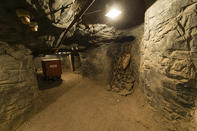Best Diamond Discoveries
Kimberley has a fascinating and interesting history. It started when the first diamond was found in South Africa in 1867. A farm boy discovered a beautiful glittering stone and took it home to show his family.

His parents had it evaluated and it was identified as a diamond. The famous Kimberley 'Diamond Rush' only occurred three years later, when a handful of diamonds was discovered on the Zandfontein farm of Nicolaas de Beers. Over 30 000 people arrived in search of these precious stones, and the de Beers happily sold their farm for £6 300 pounds.
With the outbreak of the South African War, Boer forces laid siege to the British garrisons at Kimberley and Mafikeng on the Cape border. On 14 October 1899, the Boer forces surrounded Kimberley, cutting off all outside supply lines. Contrary to expectations, the Boers did not attack, preferring the option of starving the garrison into surrender. They resorted to shelling the town, and fired 8 500 artillery rounds at Kimberley during the siege.
The best diamond discoveries were found on Colesberg Koppie, the site of the Kimberley mine. A shaft was drilled into the earth of the hill, eventually becoming the deepest hole ever dug by hand, This hole is The Big Hole of Kimberley, and the town's biggest attraction. The Kimberley Mine Museum is a reconstructed mining town built around the 'Big Hole'.
It is a huge monument demonstrating the lengths and depths a human will go to discover these priceless gems.It was only due to the existence of the giant diamond pipe that the town ever developed. Interestingly enough, the rock that diamonds are found in is called kimberlite.